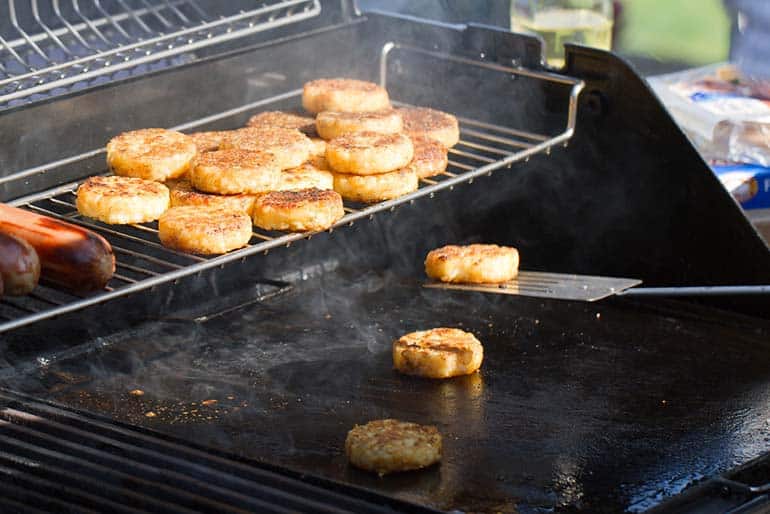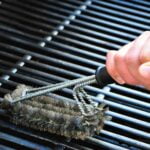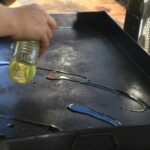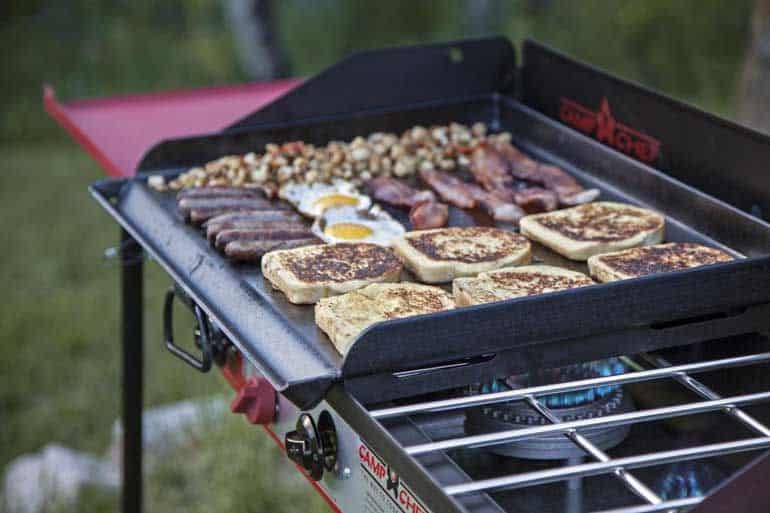A clean cooker is the best way to incredible food, and an outdoor grill is no different. From grate scrubbing to grill seasoning, learn how to clean your flat top grill quickly and efficiently.

- What are the signs that your grill needs cleaning?
- How often should I clean a flat top grill?
- How can I best keep my flat top grill clean?
- Scrub the grates
- Clean the burner protectors
- Clean off rust
- Use vinegar solution
- Clean the underside
- What you will need
- How to clean the grill
- How to season a flat top grill
Flat top grills and planchas are unique pieces of cooking hardware. Many might recognize them as the cookers seen at teppanyaki restaurants, but they’re also found in backyards and food trucks everywhere.
Cleaning a grill of any kind is always a challenge, but flat top grills can prove one of the most challenging types.
Cleaning your grill is imperative not just so it works well, but also to ensure proper food safety. Many grills come with instructions on how to clean them, but these ways don’t always work effectively.
It’s also imperative that you season it after cleaning too. Like with other forms of grill or smoker, seasoning coats a layer of protective oil across the surfaces, protecting it from the threat of rust or general wear.

What are the signs that your grill needs cleaning?
The main signs that your grill needs some attention will be that visible grease will build up on the grill’s surface, and that your food is starting to stick to the surface more easily. However some more subtle changes will occur. Your food will begin to cook unevenly due to the buildup of grim along the grill’s surface, and flakes of burnt oil will also start to develop on your food.
If any of these start occurring, then it’s time to snap into action.
How often should I clean a flat top grill?
One of the best ways to protect a grill from general wear and rust is to clean it regularly. However while it might sound ideal to clean it as frequently as possible, this isn’t always realistic. At the very least you should clean it after every use. This will help stop excess fat from setting on the grill surface, which will help prevent harmful bacteria from developing on the grill surface.
Beyond this, try to clean it every month, even if it’s not in use. Flat top grills are always exposed by their very nature, so dust, dirt, and bacteria can develop on their surface even when they’re not in use.
How can I best keep my flat top grill clean?
Just like with regular outdoor grills, investing in a good grill cover is a great way to protect your grill from interference. It’ll safeguard your grill against dust and moisture, as well as insects.
Without further ado, here’s how to clean a flat top grill.
Scrub the grates
The grates are where the food or meat sits when cooking, and so are prone to the most significant amount of grease and bacteria setting on them. These can set and get caked on as the grill cools down, so it’s even more important to react as soon as possible.
I recommend investing in a hardwire or copper brush and using hot water soapy to scrub the fat off.
Be sure to work on both sides of the grates, not just the top side, and work until you see all visible fat removed.
Clean the burner protectors
The protectors sit above the burners and help guard them against the grease and fat that can run off from food and meat during cooking. Naturally, this means that over time they can get clogged up, becoming less and less effective to the point where they’re near unusable.
In most cases, these protectors are easily removable, allowing you to clean them thoroughly. Remove the protectors and simply submerge them in hot soapy water. After a few minutes, the fat should soften and come away and will allow you to wipe away any other dirt or grease fairly easily.
Clean off rust
With the top of the grill or skillet being made from iron, this leaves your grill incredibly prone to rust. This can lead to flaking and start to leave its mark on your food.
To get rid of rust, I recommend heating up your grill a little to try and loosen it, making it easier to remove. Be sure to use heat-proof gloves to help protect yourself from burning while you handle the top of the grill.
Use soapy water and a grill stone (or sandpaper) to scrub the rust off the top.
Once you’re finished, allow the top to dry, and then apply a few drops of cooking oil to the surface. Then heat the grill at a low temperature for a few minutes. This will dry the oil and help it set, creating a protective layer over the grill top.
Use vinegar solution
To really get into the grates, another approach is to use a solution of vinegar and water. This helps break down a lot of the grease content that can build up on the grates over time.
Create a mix of warm water and vinegar, and then use a scrubbing pad to scrub the grates with the solution. The grease will begin to break down and wash away.
Clean the underside
The grill’s bottom underside is by far the most challenging part of the grill simply because it’s where most of the grease and grime from cooking ends up. It’s also extremely sticky, which makes it stubborn and difficult to remove using just a sponge.
What you will need
- Griddle pad holder
- Griddle scrub pad
- Grill screen
- Vegetable oil
- Stainless steel cleaning chemical
- Palmetto cleaning brush
- Cloth
- Warm water
PAY ATTENTION: Do not use scrub pads or any kind of abrasive on chrome grills. While fine on stainless steel, they can damage the surfaces of a chrome grill. Instead, use a palmetto cleaning brush.
How to clean the grill
While the grill is still hot, scrape off any leftover food or grease that you can.
Pour warm water over the grill to agitate the grease, making it easier to remove.
For stainless steel: Pile a scrubbing pad and griddle screen on top of each other, and use to scrub the surface of the grill.
For chrome: Use a palmetto brush to scour the surface of the grill, before then using a nonabrasive food-safe polish.
Rinse and wipe clean with a cloth.
How to season a flat top grill
Heat up your flat top grill to 350°F. Leave it to heat for 20-30 minutes. Turn it off and allow it to cool.
While the surface of the grill is still hot, spread cooking oil across the grill using a paper towel.
Turn the heat back up to 350°F. Allow the grill to heat up and wait for the oil to start to smoke. Once it smokes, turn the grill off and allow it to cool.
Once the grill is completely cool, wipe off any leftover oil.










